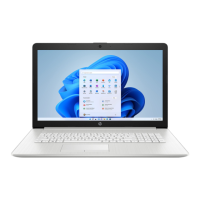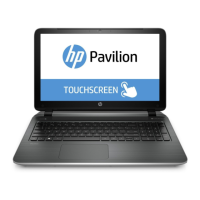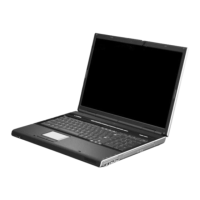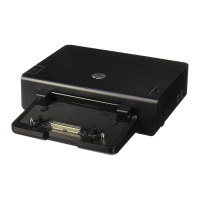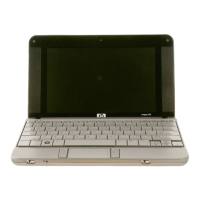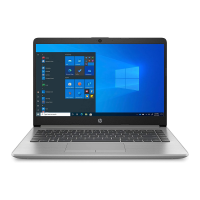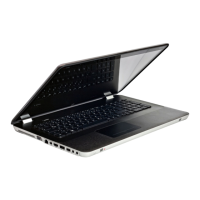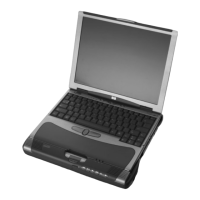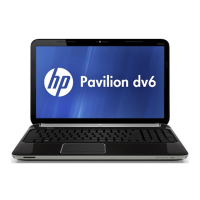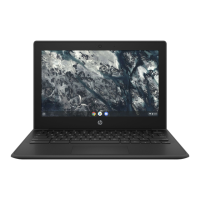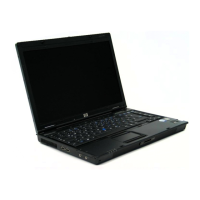What to do if power lights are off on HP Laptop?
- CCynthia SnowSep 23, 2025
If the power lights are off on your HP Laptop, and the connections are secure, the AC adapter is not functioning and should be replaced.
What to do if power lights are off on HP Laptop?
If the power lights are off on your HP Laptop, and the connections are secure, the AC adapter is not functioning and should be replaced.
Why is my HP Laptop screen blank?
If your HP Laptop screen is blank, the computer may be in Suspend state or in Hibernation. Briefly press the power button to exit Suspend or Hibernation. Alternatively, the computer may not be set to display the image on the computer screen; press fn+f4 to transfer the image to the computer screen.
What to do if my HP Laptop is unable to start up?
If your HP Laptop isn't starting, ensure it's getting power. If plugged into an AC outlet, test the outlet with another device. If using an external power source, switch to an AC outlet with the AC adapter, making sure all connections are secure.
Why is the screen on my HP blank?
If your HP Laptop screen is blank, first, the computer may be in Sleep state. To exit Sleep, briefly press the power button. If that doesn't work, the computer may not be set to display the image on the computer screen. To transfer the image to the computer screen, press fn+f4.
What to do if the wireless network connection is not working on my HP Laptop?
If the wireless network connection is not working on your HP Laptop, you can try the following: * Right-click the Network Connection icon in the notification area to enable or disable a wireless or wired network device. * Ensure the wireless device is turned on. * Make sure that the computer wireless antennas are free from obstructions. * Verify that the cable or DSL modem and its power cord are properly connected and that the lights are on. * Check that the wireless router or access point is properly connected to its power adapter and to the cable or DSL modem, and that the lights are on. * Disconnect and then reconnect all cables, and turn the power off and then back on.
What to do if the optical disc tray does not open on my HP Laptop?
If the optical disc tray on your HP Laptop does not open for removal of a CD or DVD, insert the end of a paper clip into the release access in the front bezel of the drive. Press in gently on the paper clip until the disc tray is released, and then pull out the tray until it stops. Remove the disc from the tray by gently pressing down on the spindle while lifting the outer edges of the disc.
Why is my HP unusually warm?
If your HP Laptop is unusually warm, allow the computer to cool to room temperature. Be sure to keep all vents free from obstructions while you are using the computer, as a vent may be blocked.
What to do if HP Laptop doesn't burn a disc?
If the process of burning a disc does not begin, or it stops before completion on your HP Laptop, be sure that all other programs are closed. Turn off Sleep mode. Be sure that you are using the right kind of disc for your drive and that the disc is inserted properly. Select a slower write speed and try again. If you are copying a disc, save the information on the source disc to your hard drive before trying to burn the contents to a new disc, and then burn from your hard drive.
What to do if an external device is not working with my HP Laptop?
If an external device is not working with your HP Laptop, make sure to turn on the device according to the manufacturer's instructions. Also, ensure that all device connections are secure and that the device is receiving electrical power. Check that the device is compatible with the operating system, especially if it is an older device. Finally, verify that the correct drivers are installed and updated.
What to do if I cannot connect to a preferred network on HP Laptop?
If you cannot connect to a preferred network on your HP Laptop, it may be a security-enabled WLAN, and you must have the security code to connect. Alternatively, it may be a corrupted WLAN connection. If there is a network status icon in the notification area, right-click the icon, and then click Troubleshoot problems. If there is no network status icon in the notification area, follow these steps: Start > Control Panel > Network and Internet > Network and Sharing Center.
Procedures for shutting down, Sleep, and Hibernation modes to manage power.
Details on setting power options, managing battery life, and using external AC power.
Procedures for managing hard drives and optical drives, including performance optimization.
Overview of security measures for protecting the computer from unauthorized access.
Guidance on setting and managing BIOS and Windows passwords for system security.
Information on using antivirus, firewall software, and installing critical security updates.
Methods for backing up data, performing system recovery, and reinstalling Windows.
Using Windows 8 installation media or the Refresh option for system recovery.
Navigating and modifying settings within the computer's BIOS or Computer Setup utility.
Instructions for determining the BIOS version and downloading/installing BIOS updates.
Running diagnostic tests to check the computer's hardware components for proper function.
Solutions for common problems like startup failures, blank screens, and device malfunctions.
Procedures for shutting down, Sleep, and Hibernation modes to manage power.
Details on setting power options, managing battery life, and using external AC power.
Procedures for managing hard drives and optical drives, including performance optimization.
Overview of security measures for protecting the computer from unauthorized access.
Guidance on setting and managing BIOS and Windows passwords for system security.
Information on using antivirus, firewall software, and installing critical security updates.
Methods for backing up data, performing system recovery, and reinstalling Windows.
Using Windows 8 installation media or the Refresh option for system recovery.
Navigating and modifying settings within the computer's BIOS or Computer Setup utility.
Instructions for determining the BIOS version and downloading/installing BIOS updates.
Running diagnostic tests to check the computer's hardware components for proper function.
Solutions for common problems like startup failures, blank screens, and device malfunctions.
